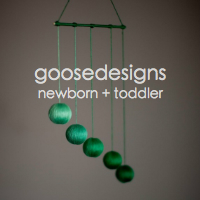How to React to an Angry Toddler Who Spits and Throws Things
It was bathtime. B and M are sitting in the bathtub while I’m reaching in to brush M’s teeth. She shakes her head from left to right and back again to dodge the toothbrush. I give up. She then takes her bath spray bottle and starts spraying first Brooke, then me. I say sternly, “You can spray water at the wall, but not at people.” Then she opens the bottle, takes a sip and spits the water out of the bathtub onto my feet. “No. Spitting. Water.” I say even more loudly. She throws the spray bottle on the floor, turns her head toward the wall and refuses to look at me.
I was about to blow up when I stopped myself. Something was off. This was not a matter of setting more boundaries. She was doing this on purpose. Then a voice from somewhere reminded me: Connection Before Correction.
I picked her up out of the bathtub (we have a rule that when you pour water outside of the tub, you get taken out). She starts to resist, but then, I get really close to her cheek and start sniffing exaggeratedly. “Hmmm…your cheeks smell good!” She smiles. I then take her feet and put it right up to my nose, “Do your feet smell good?” She laughs. I then bend her over to smell her back. She squeals with delight. Then she gives me her arm to smell. Then her hair. “Smell, Mama!” We play and play. I finally give her a huge hug, look her in the eyes and tell her that she is delicious-smelling all over.
I pick up her toothbrush. Without me saying a word, she opens her mouth and waits. I take the opportunity and give her a thorough flossing and brushing (I do this twice a week and let them brush their own teeth the other days). She then puts on her pajamas, runs off to play and is completely absorbed in independent Lego-building till I announce that it’s bedtime.
In those moments of anger and frustration, I often want to go the route of yelling and punishing. I mean, don’t you? On bad days, I’m already yelling before I can stop myself. But over and over, I’ve witnessed just how ineffective it is. It may work for a few moments, but then it’ll just pop up somewhere else.
It turns out nothing works as well as connecting – I mean the genuine kind where you are fully present while playing, tickling, hugging, kissing, loving them. 5 minutes of it, and I find the children often go off to do their own thing: happy, fulfilled and satisfied.













This is so true. I find it helps me to relax when I’m worked up about the issue too.
Thanks for the post- someone pointed me to it. I’m AMI Montessori trained at the 3-6 level, have worked in Montessori for 25 yrs and still have a question about your post:
I understand why the “connection” works, what I don’t see in what you wrote is the “correction” piece- I didn’t read that once things settled down you said a few words about what had gone on… it all worked out, but my sense or worry would be that the msg received is “who can actually do what you want and you’ll be loved and played with anyway”…. surely not what we want.
And so-?
Thanks,
Mark
Hi Mark,
Thanks for your response. I think as a parent of toddlers, day in and day out, I’m setting limits and ‘correcting.’ And when I’m at that point I was describing with my toddler, where they know they’re not supposed to be doing something and you’re just getting angrier and louder etc. it just stops accomplishing anything. I wanted to point out an alternative to those moments when it has escalated to that point – to stop and try ‘connecting’ first. I definitely believe in setting limits (and do so) but sometimes I personally get immersed in setting limits only. But being able to connect, play, hug really releases the stress of those moments for everyone and I find it can accomplish more. As you said, it would be helpful to talk about it afterwards and we often do, like in this post: https://montessorionthedouble.com/2013/01/30/what-its-really-like-to-have-toddler-twins/ Thanks!
Thank you so much for this post. Today with no school or summer camp this week (both my 3 1/2 year daughter and almost 5 son are in Montessori), I had one of those days today and lost it few times – not my best moments. I completely get it. It’s when we first connect and see what it is the child needs in that moment their undesirable behavior shifts.
I also see what the previous post of Mark, the Montessori teacher, was making. I definitely see that when the child is calmed down a conversation is needed. I think I would have said that we don’t throw water because it is dangerous, people can slip and it makes a mess. Out comes the towel and a kind request to please clean the water off the floor. Being in Montessori, my children are very happy to always help and clean things up (and most of the time) even their messes they make on purpose. What a timely post. Thank you again!
Dana, I totally agree with you. Having that conversation you suggested is needed, for sure.
hey i see the connecting part, but does it look like you are distracting your kids to do something else. can you teach me how can you differenitate it? i feel like at times you have to set limits and cant distract your kids to stop their bad behavior. your thoughts? thanks!
Hi Jessica, I totally know what you mean, but this is what I’ve learned: When they ‘misbehave,’ and you react to the bad behavior, then they start reacting to your reaction, and then the reptilian brain of the child comes out. At that point, everyone is having a reaction and no one will win. What you want is to engage your child’s higher brain, so they can learn not to do certain things, to think logically about their actions, to understand consequence, etc. But that takes time to develop. If you are constantly embroiled in a struggle with them, you’re really not getting anywhere but strong-arming them into submitting. You’re not teaching their higher-brain anything. Instead, if each time you connect with them, redirect the behavior, etc. When you do that enough times, they eventually get the pattern. I really recommend this great book that describes this process much more eloquently than I have, written by these an MD and a PhD: No Drama Discipline: The Whole-Brain Way to Calm the Chaos